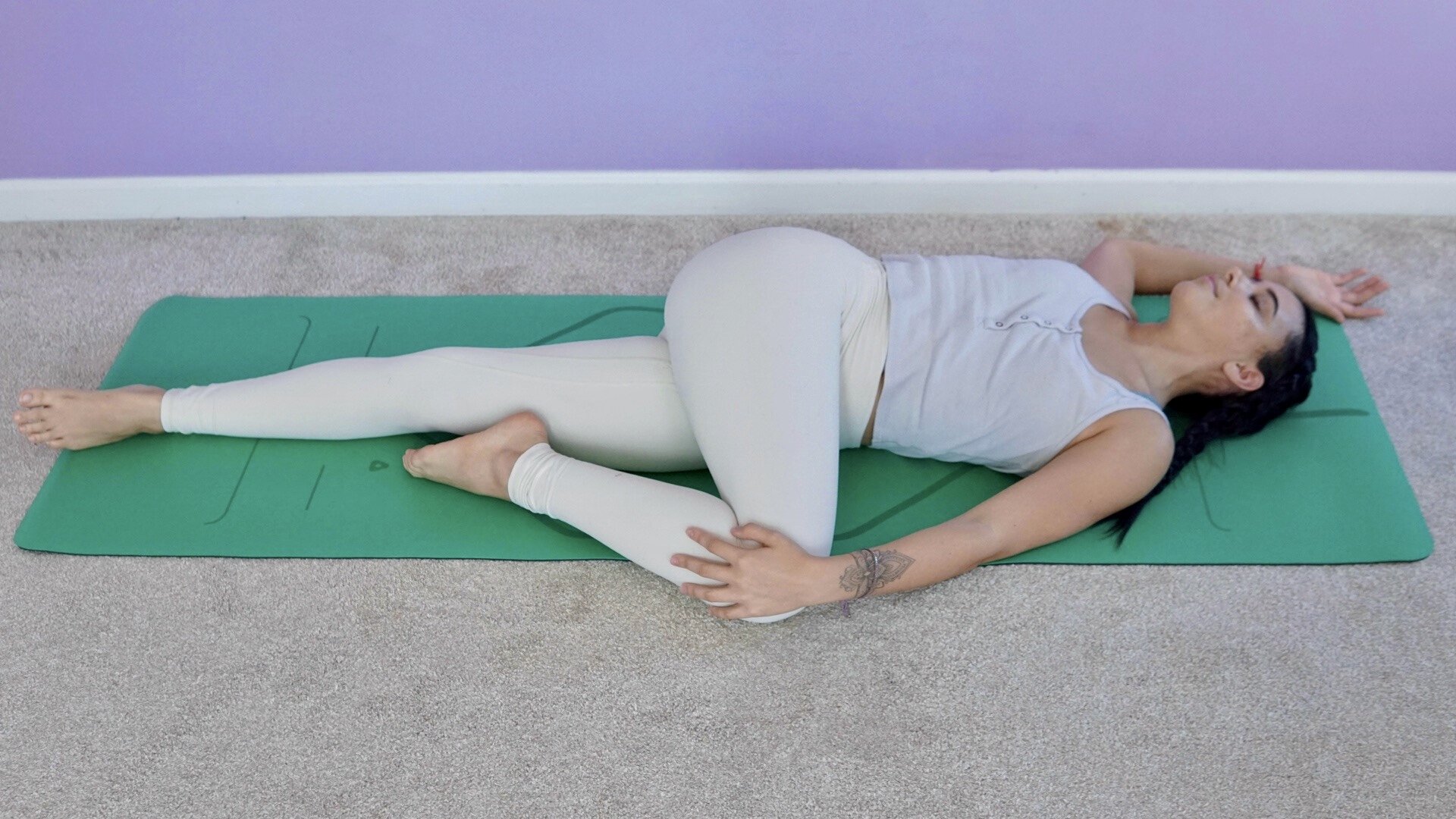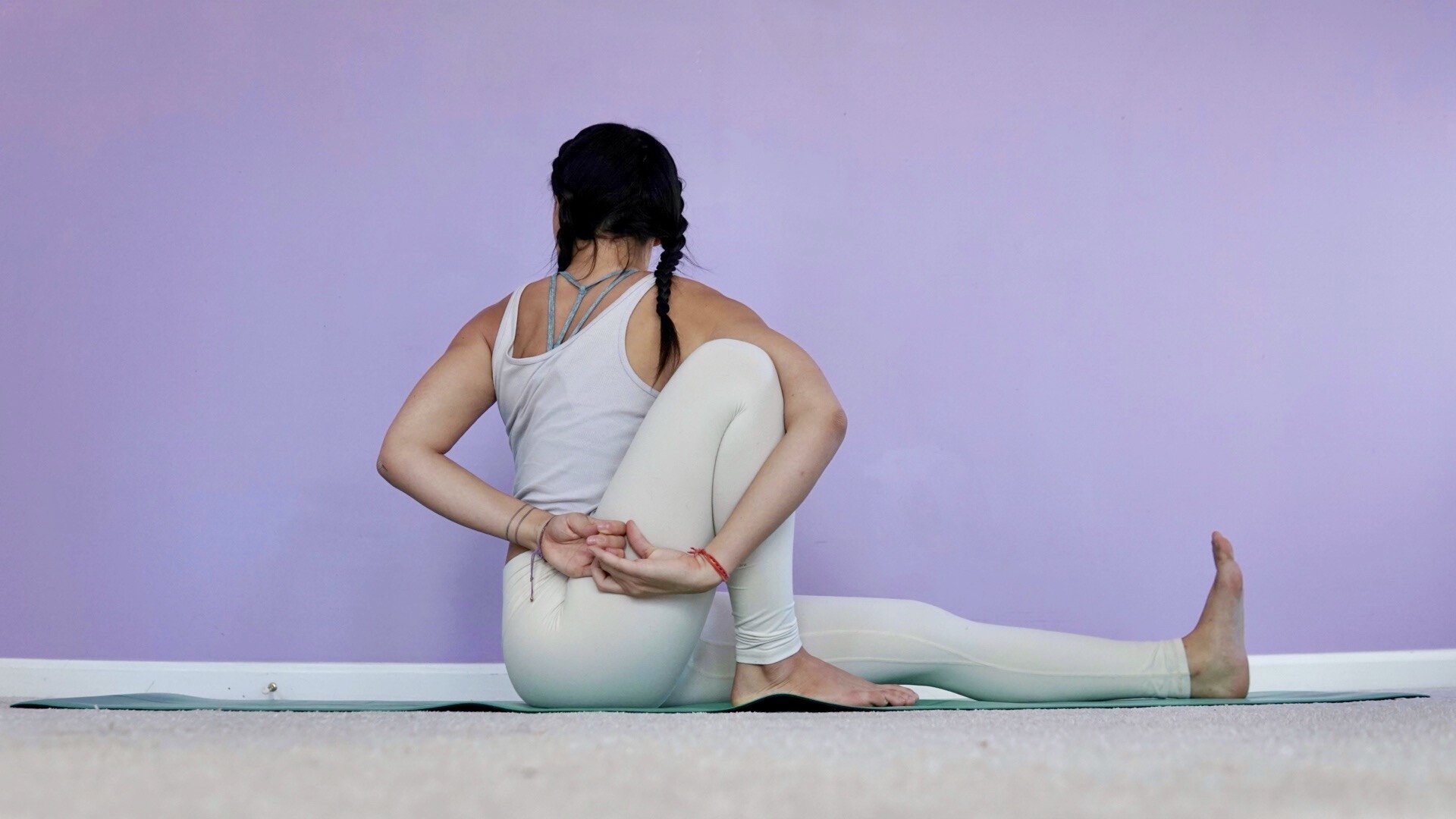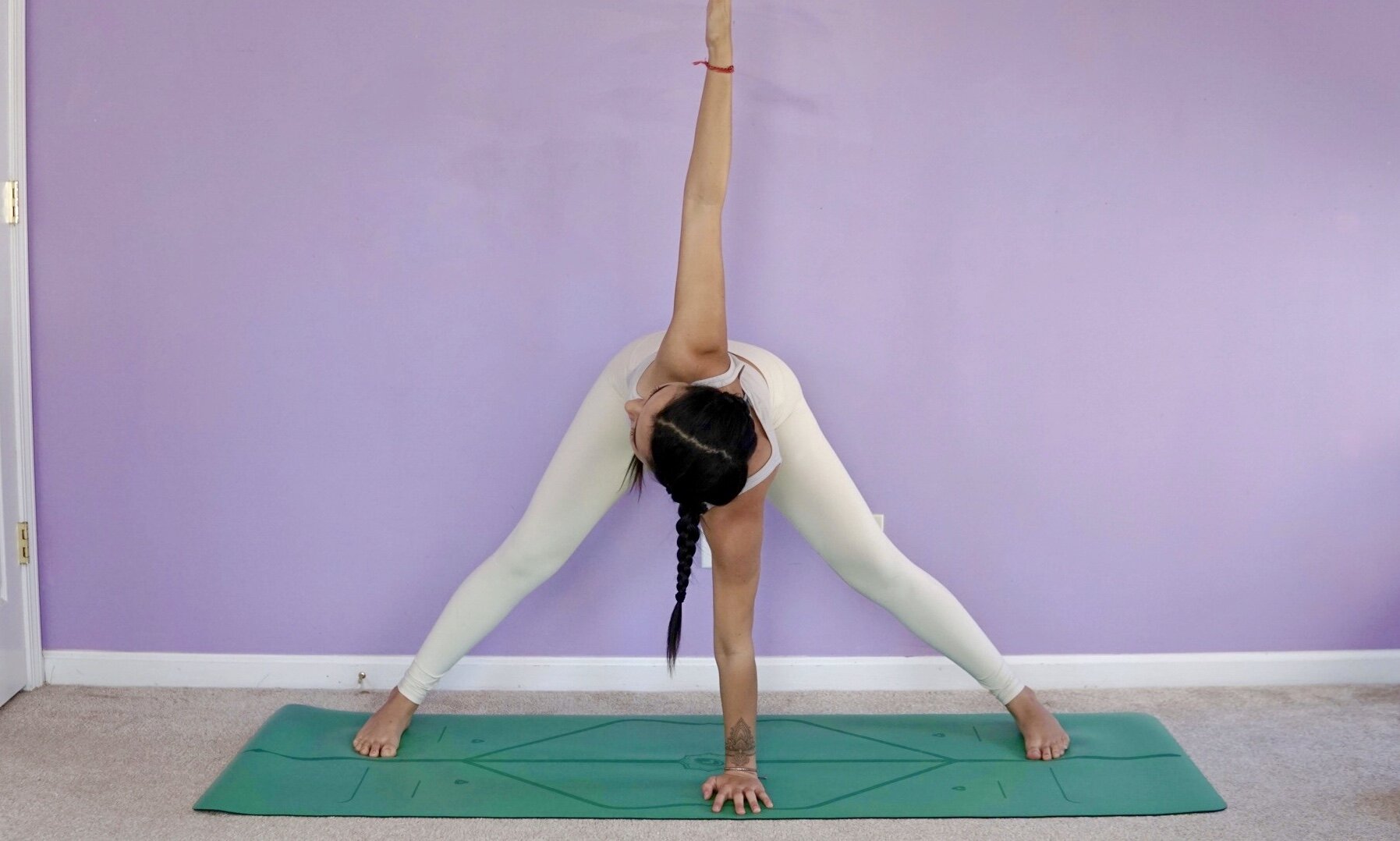What is a yoga twist?
The term “twist” is used to encompass any pose in which there is a rotation of the torso; the shoulder girdle is turned to face the opposite direction of the hips.
What is physically happening in a twist?
The action of twisting, rotates the spine and helps to stretch the muscles throughout the back body.
Yoga anatomy expert Ray Long explains what happens during a twist in his book, Anatomy for Backbends and Twists:
Twisting poses connect the lower and upper appendicular skeletons (the arms and the legs) to turn the axial skeleton (the spine and torso). This lengthens the spinal rotator muscles that attach from one vertebra to another, as well as the erector spinae, quadratus lumborum, and abdominal musculature.
How can we safely practice twisting postures?
Postures that twist the body (parivrtta in Sanskrit) can be done seated, standing, lying down and even inverted. Some of these require significant core strength and flexibility, but many are accessible for most practitioners.
There are several key factors to executing twists safely and effectively, and as everything in yoga, it begins with the breath.
To begin any twisting pose, start with a neutral spine.
As you inhale, lengthen the body from the hips through the crown of the head.
As you start to exhale, keep your hips in a neutral position and begin the rotation from the lumbar spine.
Evenly move one vertebra at a time through the top of the head.
As you hold the pose, continue to breathe and feel the muscles begin to relax.
See if there is more room to twist further. Inhale; lengthen your torso a little more. Exhale and twist more deeply.
The cervical spine, for most people, is the most flexible part of the spinal column. Pay specific attention to this area to ensure that you don’t over rotate. Always practice twists on both sides then counterpose with an asana that brings the torso back to neutral alignment. Examples of counterposes for twists are mountain pose, chair, downward-facing dog, monkey and happy baby.
As a teacher, making twists accessible for all body types and conditions is important. Use of props can assist students to safely align many twisting poses. Blocks, bolsters, chairs and even a wall are useful to help the practitoner keep a healthy posture during asanas.
Note: If you are a teacher, always have students check with a medical professional if they have a spinal disc injury, significant back pain, sacroiliac issues, serious digestive conditions or are pregnant.
Why should we twist?
During our daily life, the movements we perform, don’t usually include twisting. Most of the time, we stand up, walk, sit or lay down. Our spine is meant to move through four planes of movement, one of which is rotation. Twists can promote a healthy range of motion, which may be compromised, due to a sedentary lifestyle, injury, degenerative conditions, or imbalances through sports or daily activity.
Asanas that rotate the torso lengthen not only the larger muscles of the back, abdomen, and chest but also the smaller, deeper muscles including rotatores, multifidus, intercostals and the sternocleidomastoid. These motions can also help reduce back pain, increase circulation, aid digestion while de-stressing and centering the mind.
A key piece of a yogic life is to cleanse the body of impurities. The theory is that once the body is cleansed and healthy, then the energy that would normally go toward dealing with disease or discomfort can then go toward higher endeavors, such as deepening the inner life. Yoga twists like all other yoga poses will reduce stress and anxiety because they quiet the chattering mind. Yoga poses draw the practitioner into the present moment which slows and calms the mind. Thus, the act of twisting the body helps purifies every layer of your being. Internal and external. Mind and body.
Let’s try it out!
Flow with this 55-minute full-body vinyasa class incorporating twists, binds and some core work to help your body and mind naturally reset.
Here are seven twisting postures that you can incorporate into your daily yoga practice…
Reclined Spinal Twist (Supta Matsyendrasana)
2. Half Lord of the Fishes (Ardha Matsyendrasana)
3. Revolved Triangle Pose (Parivrtta Trikonasana)
4. Revolved Crescent Lunge (Parivrtta Anjaneyāsana)
5. Marachi’s Pose I: Bound Twist Variation (Marichyasana)
6. Revolved Chair Pose (Parivrtta Utkatasana)
7. Revolved Wide Legged Forward Fold (Parivrtta Prasarita Padottanasana)
Happy Twisting!
All my love,
Jessica







